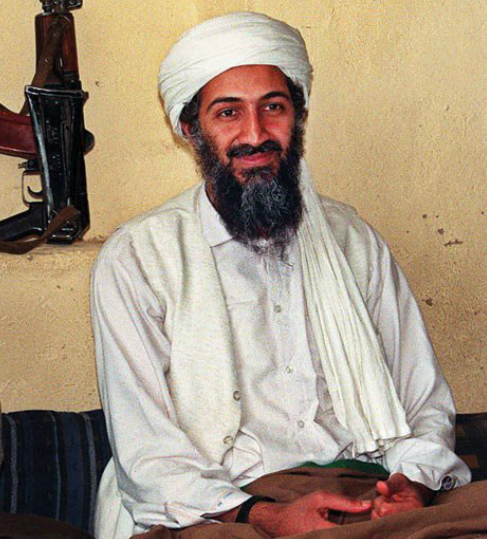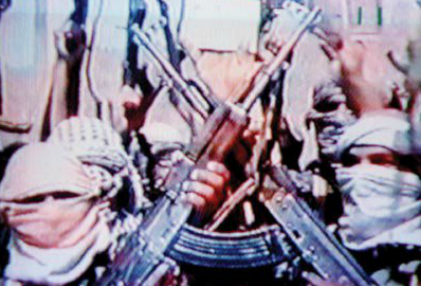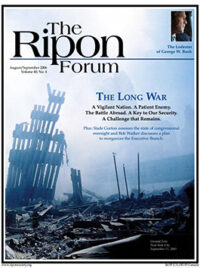On 9/11, American entered a war that the terrorists had already begun
As we mark the fifth anniversary of the 9/11 attacks on America, and we review the half a decade of war on terror since, the central question that comes to the minds of both experts and policymakers is this – who is winning the war and where are we in its prosecution? And to refine, is al Qaeda on the retreat, is Afghanistan working, is Iraq surviving the challenge, and is Lebanon’s Cedars Revolution on the rise or has it been defeated? Is Hezbollah’s war changing the U.S. strategy regarding Iran and Israel? And finally, is the U.S. homeland secure, or is it penetrated and threatened?
All of these are issues of great importance to Americans, Westerners and societies determined to struggle for democracy and freedom. For even though 9/11 was a benchmark in the history of the U.S., it also became a rallying date in the eyes of the Jihadists for more lethal future attacks, not just in America, but also in Europe, India, Africa and other parts of the world that have tasted the wrath of terror since 2001.
The widening of the war on terrorism and the multiplication of its battlefields has critics claiming Americans have been led in the wrong direction, and that the decision to fight the terrorists on their ground was erroneous. Are the critics right? Or are they wrong? Five years after the attacks which sparked this long war, a proper review is in order – a review not only of the enemy we face, but of the war we are engaged in and what the future holds in this regard.
The Road to 9/11

It is first important to understand that the road to 9/11 was the result of a patient and perseverant march by the Jihadists Salafists (including al Qaeda), at least since the end of the Cold War, to first test and then engage the United States head on.
In the decades after World War II, the bulk of the Sunni Islamists concentrated on the Soviet Union and communism as a prime enemy, not because they supported a free market economy and NATO, but because they perceived atheist socialism as a competitor to be eliminated first. Wahabism offered to work with the U.S.-led West against the Soviets, and Washington extended its support to the Mujahidin in Afghanistan.
But as soon as the U.S.S.R. collapsed, the Jihadists regrouped and took aim at the U.S. Their perception of the crumbling of communism in Russia was based on the idea that once they implemented their Salafi form of Sharia and Jihad, “Allah would do the rest.” The 1990s witnessed their deliberate ascendancy and repetitive attacks: the first attack on the twin towers in 1993; the attack on the Khobar towers in 1995; the rise of the Taliban in 1996; the Algerian civil war, the Chechnya Jihad, and the Sudan massacres; the 1998 U.S. embassies attacks in Africa; the penetration of the U.S. by terror cells; and finally the September 11, 2001, terror strikes, aimed initially at provoking a Madrid-like collapse in America.
Meanwhile, the other Jihadi powers, Iran and its extension Hezbollah, as well as their Baathist ally in Syria, moved on two fronts – controlling Lebanon and developing nuclear power. In parallel, Hezbollah built a network of cells within the West, while al Qaeda was building theirs.
The Road Since Then
In the wake of 9/11, the U.S. led a coalition to remove the Taliban from Afghanistan and root out al Qaeda from its sole real estate. After the battles of Tora Bora, state-sponsored Salafi Jihadism was gone (for the time being). A debate then took place within the U.S. government with regard to the next stages in the war against terror. A strategic choice was made to prosecute the war on the grounds of what are essentially police goals – finding terrorist cells, dismantling them, and bringing them to justice, both within the U.S. and worldwide.
This choice was based on the fundamental premise that there is, for the lack of a better term, a “mother ship” out there. It is a ship that is primarily ideological and deeply incrusted in the organizations, regimes, and networks of radical clerics. Al Qaeda is the product of a wider, deeper pool of Wahabism, Salafism and Muslim Brotherhood movements within the greater Middle East and beyond. The political culture they have produced for decades has allowed military dictatorships to espouse their final objectives, obstruct democratization and sink all attempts for peace processes in the region.
Hence, a second strategic choice was also made to intervene internationally within the sphere of influence of the Jihadists. This intervention occurred on two tracks. The first track was geared toward assisting civil societies endangered by violent regimes. The second track was geared toward delivering a war of ideas to delegitimize the ideologies promoting Jihadism and other forms of radicalism. At the same time this was being done internationally, the U.S. embarked on a course to strengthen its homeland security within its own shores.

Let there be no doubt– the Jihadists are a patient enemy. They are recruiting wider in their indoctrinated pool. However, let there also be no doubt that as a result of U.S. actions abroad, the pool’s future is now in doubt.
The Iraq Campaign
The debate about the Iraq campaign has signaled a lack of national consensus in the U.S. and the West as to what the danger we face actually is and how we should confront it. While many elites, still unengaged in the war on terror and still swayed by the oil influenced political culture of the 1990s, looked at the invasion of Iraq as a strategic mistake because of what they perceived as a lack of legitimate claims (regarding the widely reported presence of weapons of mass destruction and the possible link of the Hussein regime to al Qaeda), the real aim of the campaign was the liberation of a segment of Arab and Middle Eastern society ruled by a ruthless dictator.
As I argued in my book Future Jihad, the U.S. intervention – which should have taken place a decade earlier – intercepted the rise of a giant Jihadi bloc stretching from Afghanistan to Lebanon equipped with non-conventional arms. Historians will see it clearly. The prosecution of the liberation could have been much better, but the freeing of the Kurds, Shiites and non pro-Saddam Sunnis opened the path for a dynamic to bear fruits to be understood and seen years from now.
Elections and Democracy
Al Qaeda has been stopped as a geographically-based regime, but it has still been able to wage terrorist attacks from Indonesia to London. The measurement of its success and its failures is not through the numbers of strikes, but by analyzing the global and future growth of the movement. The arrests of terrorists and break-up of terror cells in the U.S., Canada, and elsewhere over the past years and recent months indicate that a second generation of Jihadists is spreading and readying to target American stability.
Let there be no doubt — the Jihadists are a patient enemy. They are recruiting wider in their indoctrinated pool. However, let there also be no doubt that as a result of U.S. actions abroad, the pool’s future is now in doubt. If one observes the far reaching effects of the Afghanistan elections and the three Iraqi votes, the sociological consequences are revolutionary. In short, there is no return backward.
Despite all the bloody and barbaric slaughter by Zarqawi and his equivalents across the region, the younger generations and women who were given the opportunity to taste and test the democratic process have leaped into their future. It will take time before the culture of democracy takes root in the civil societies liberated so far, and in those hoping to be later.
But it is now proven through al Qaeda and other totalitarian movements and regimes that the lethal enemy of Jihadism is democracy.
The Cedars Revolution
On another front, and after 32 years of Syrian occupation and Hezbollah terror, Lebanon’s Cedars Revolution in 2005 demonstrated that in previously democratic societies, the roots of freedom can redevelop.
Thanks to the U.S.-introduced United Nations Security Council Resolution 1559, which was approved in 2004 and called on Syria to withdraw and Hezbollah to disarm, Lebanese masses from various communities showed the world and their occupiers that popular democracy movements can face off with military power, if backed by the international community.
But the semi-success of Lebanon’s revolt triggered a counter attack by the “axis” of the Syrian and Iranian regimes this year. After a series of assassinations of Lebanese politicians, the axis is provoking a war with Israel, in an attempt to take back the small country and bring back Iranian power onto the Mediterranean.
In the decades after World War II, the bulk of the Sunni Islamists concentrated on the Soviet Union and communism as a prime enemy… But as soon as the U.S.S.R. collapsed, the Jihadists regrouped and took aim at the U.S.
Iran and Syria
Concerned with the regime changes in Afghanistan and in Iraq and with the Cedars Revolution in Beirut, Iran President Mahmoud Ahmedinijad decided to counter these developments in two ways. First, he announced his intention to acquire nuclear capabilities, thereby signaling that Tehran would use nuclear weapons as a shield against future international support to domestic democratic uprisings. Secondly, Ahmedinijad ordered Hamas to sink the peace process among Palestinians and Israelis and instructed Hezbollah wreak havoc in Lebanon by attacking Israel.
Forced from Lebanon and threatened by the Hariri assassination investigation, the Assad regime converged with Tehran and Hezbollah on a regional terror plan. But both regimes in Iran and Syria and their allied organizations in Gaza and Lebanon have disclosed their plans early in the process, just as Bin Laden did on September 11. They’ve attacked civil societies while democratic movements are on the rise. In Damascus and Tehran, youth, women and reformists have understood the message of the war of ideas. Despite terror and bloodshed, the future is for them to struggle for.
War of Ideas
To experts and historians alike, it is clear that the war on terror is centering on the war of ideas. The ability of societies ruled by terror regimes and ideologies to realize the essence of the war and what it means to them is critical. But just as critical is the ability of the members of these societies to understand that when the U.S. and its allies intervene in a post 9/11 era, it is not to rule over them and govern their way of life. Rather, it is to free them so that they can make the choices they deem appropriate.
It is the ability to make choices that will defeat terrorism, be it Jihadi or Baathist. The struggles in Afghanistan, Iraq and Lebanon today are about new democracies, freed by the U.S. and its coalition, attempting to grow, while forces of fascism and Jihadism are attempting to keep them down.
The debate in Washington needs to grasp and aggressively emphasize that dimension of the conflict, for without this understanding, U.S. support for the real war on terror will fade.
And then we would be playing into the hands of an enemy that is not only extremely patient, but ideologically deadly, as well.
Dr. Walid Phares is a Senior Fellow with the Foundation for the Defense of Democracies in Washington. He is the author of Future Jihad: Terrorist Strategies Against America.




